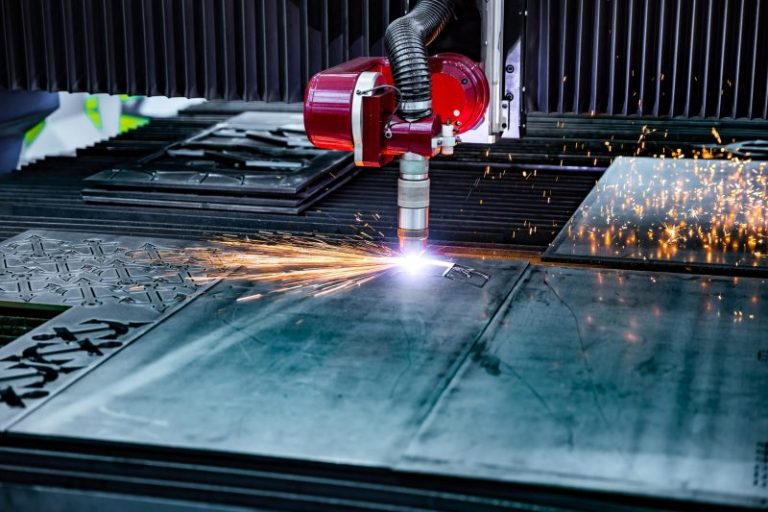Metal fabrication is an essential component of numerous industries, encompassing the construction of structures, machinery, and various equipment. Over the years, the metal fabrication industry has undergone a significant transformation, owing to technological advancements that have revolutionised traditional practices. Among these advancements, the rise of cnc plasma machine technology stands out as a pivotal development that has dramatically enhanced the precision, efficiency, and capabilities of metal fabricators.
The Evolution of Metal Fabrication Technology
In the early days of metal fabrication, traditional tools and manual labour were predominantly used to cut, bend, and assemble metal components. However, this approach was often time-consuming and lacked the precision required for complex designs. The advent of automation brought about a new era in metal fabrication, with CNC (Computer Numerical Control) technology leading the charge.
Understanding CNC Plasma Machines
CNC plasma machines are sophisticated tools controlled by computer systems, allowing for the automated cutting of metal materials with high precision. These machines utilise plasma torches that generate a high-velocity stream of ionised gas heated to a temperature that can easily melt metal. The result is a faster, cleaner, and more precise cut than what could be achieved through manual methods or older machinery.
The Impact of CNC Plasma Technology on the Industry
The integration of CNC plasma machines into the metal fabrication process has significantly impacted the industry. The benefits of this technology are felt across various levels, reducing time spent on individual projects, minimising material waste, and improving overall safety standards in the fabrication environment.
Advanced technology and software used in CNC plasma machines facilitate the detailed programming of cutting paths, ensuring the exact dimensions and specifications for each project are met. Fabricators can take on complex designs and intricate cuts that would be challenging or even impossible to achieve manually.
Beyond that, CNC plasma machines have paved the way for increased production rates. By automating the cutting process, fabricators can achieve a higher throughput – allowing for the completion of more projects within a shorter timeframe. This efficiency translates to cost savings and the potential for a more competitive position in the marketplace.
The Versatility of CNC Plasma Machines
One of the strengths of CNC plasma machines lies in their versatility. Capable of cutting a variety of materials, including steel, stainless steel, aluminium, copper, and brass, these machines are indispensable in multiple sectors such as automotive, aerospace, and shipbuilding. Their ability to handle different metal thicknesses while maintaining precision and speed is a testament to the adaptability of this technology.
Additionally, the software accompanying these machines continues to evolve, offering more intuitive user interfaces and advanced features such as nesting software, which optimises the placement of patterns on metal sheets to minimise waste. With ongoing developments, the capabilities of these machines are expected to further expand, thus continually enhancing the potential of the metal fabrication industry.
Trends Shaping the Future of CNC Plasma Cutting
Within the realm of metalworking, CNC plasma technology is not static. Current trends indicate a shift towards automation and intelligent manufacturing processes, suggesting that the future will see even more sophisticated applications of CNC plasma machines. The integration of Industry 4.0 technologies, such as big data analytics, IoT (Internet of Things), and AI (Artificial Intelligence), is set to envelop CNC plasma cutting into smart factory environments.
Furthermore, environmental considerations are being addressed through innovations in plasma cutting technology. Manufacturers are striving to create machines that are energy-efficient and have a smaller carbon footprint while maintaining high performance. This aligns well with the sustainability goals that many businesses are adopting as part of their corporate social responsibility initiatives.
Challenges and Opportunities
Despite the numerous advantages, the transition to CNC plasma cutting also presents challenges. The initial investment can be substantial, as the cost of high-quality CNC plasma machines and the necessary software is significant. There is also a learning curve involved in mastering the technology, necessitating proper training and the development of skilled operators.
Nevertheless, the opportunities that CNC plasma cutting technology introduces are vast. Small to medium-sized enterprises have the potential to level the playing field with larger corporations by investing in these machines, as they can offer similar precision and efficiency in their services. CNC plasma cutting also enables customisation and small-batch production to be more viable and profitable, further extending the range of opportunities for businesses.
In conclusion, the influence of CNC plasma machines on metal fabrication is a prominent example of how technology can transform an entire industry. By fostering higher precision, efficiency, and flexibility, these advancements are not only revolutionising current fabrication methods but are also shaping the future of manufacturing. As metal fabrication continues to evolve, the role of CNC plasma machines becomes increasingly significant, demonstrating the power of innovation and the capacity for growth within this sector.


